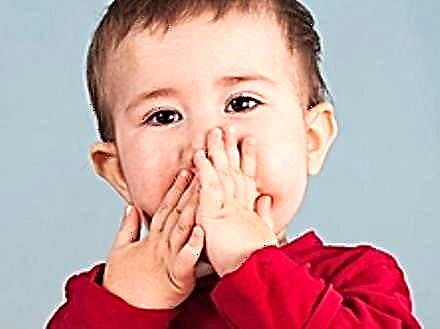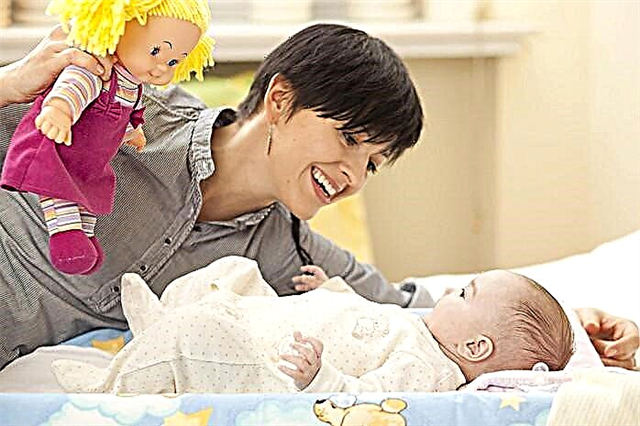Children often have to donate blood for analysis. This is done during routine examinations or in case of illness. The value of one of the main indicators, leukocytes, can tell a lot about the child's condition. To understand why they deviate from the norm, you need to know the basic functions of "white" blood cells.

Child
Leukocyte concept
Leukocytes are "white" blood cells that guard the immune system. Their main task is to detect harmful bacteria, viruses and neutralize them. They also react to foreign bodies, slags.
Despite the definition, the leukocytes are pink-violet on closer examination under a microscope. They actively move through the body, detecting and identifying dangerous bodies. Leukocytes move freely through the walls of the capillaries to get to the pathogenic particles.
Note! "White" blood cells tend to accumulate dangerous viruses and bacteria, they destroy them along with the infected cells. As a result, pus is formed, these are the leukocytes that did their job.
Types and functions of leukocytes
The following types of leukocytes are distinguished:
- Neutrophils. This is the largest group. Neutrophils are found in tissues and form a reserve, located in the bone marrow. As soon as the body feels the need for them, they are activated. They are the first to arrive in places where microbes and toxins accumulate. Moving quickly through the body, they seek to destroy infected cells and foreign particles. One neutrophil kills about 20-30 microbes; it acts on them with its own enzymes and bactericidal substances. If it dies, bacteria continue to multiply;
- Eosinophils. This is a small group of leukocytes. They also move freely through the body and penetrate to the place of danger. But, in comparison with neutrophils, there are not so many of them, so their role is not so significant. When allergic reactions occur in the body, mast cells are activated, and eosinophils are directed to destroy them. Therefore, their number increases when infected with worms, allergies. It also destroys basophils, another type of white blood cell. When fighting mast cells, histamine is released, which provokes allergy symptoms. If it enters the bloodstream in large quantities, for example, swelling of the mucous membranes occurs, rashes appear on the skin. It is eosinophils that are called upon to destroy the dangerous histamine;
- Basophils. A type of white blood cell that produces histamine, which helps to expand capillaries, which is essential for the healing of cells and tissues. Basophils also secrete heparin, which interferes with blood clotting in the area of inflammation. Their number increases with allergies, stress and inflammation;
- Monocytes. It is the main agent against germs. They work several times more efficiently than neutrophils in this direction. They are also able to survive and remain active in an acidic environment. This is another advantage over neutrophils that die in such conditions. They not only fight microbes, but also cleanse the body of dead neutrophils;
- Lymphocytes. This type of leukocytes, after entering the tissue, is able to return back to the blood. They live for quite a long time, unlike other species, which often exist for several days.

Leukocytes under a microscope
Leukocyte formula
The leukocyte formula characterizes the values of all types of leukocytes. In this case, not only their absolute values are determined. It is important how many percent each species takes in the total volume of blood cells.
Normal values in a child
Normal values for a child depend on their age. So the indicators on the first day of life and after a month are very different.
Normal leukocyte counts in a child under one year old
| Index | Newborn | 1 month | 6 months | 1 year |
|---|---|---|---|---|
| Leukocytes, * 〖10〗 ^ 9 / l | 8,5-24,5 | 6,5-13,5 | 5,5-12,5 | 6,0-12 |
| Stab neutrophils,% | 1-17 | 0,5-4 | ||
| Segmented neutrophils,% | 45-80 | 15-45 | ||
| Eosinophils,% | 0,5-6 | 0,5-7 | ||
| Basophils,% | 0-1 | |||
| Lymphocytes,% | 12-36 | 40-76 | 42-74 | 38-72 |
| Monocytes,% | 2-12 | |||
Changing indicators allows you to assess the processes occurring in the body, to determine the presence of a viral or bacterial infection.
There is such a thing as a shift in the leukocyte formula:
- It shifts to the left if the number of stab neutrophils increases. This means that the body is under the influence of infection;
- To the right, the formula shifts, respectively, with a decrease in stab neutrophils and an increase in segmented neutrophils. This may indicate kidney and liver problems.
In any case, the test results alone do not represent a complete picture of the child's condition. After examination, in particular, examining the throat, feeling the lymph nodes and talking with the parents, the doctor prescribes additional studies to make an accurate diagnosis and prescribe treatment.
Usually, the first step is sent for a general urinalysis to rule out a urinary tract infection and monitor kidney function.

Doctor visit
Note! Only a specialist who understands what could increase and decrease the main indicators can decipher the test results. He will immediately determine whether it is a dangerous disease or not worth worrying about.
Diagnosis of leukocytosis
With leukocytosis, the number of "white" blood cells increases in comparison with their normal value. The increase can be small or strong.
So, the level of leukocytes rises after eating or during exercise. These are physiological processes, they are not dangerous. After a short period of time, the indicators return to normal. If such growth is considered as a pathological reaction of the body, we are talking about an inflammatory process.
Famous pediatrician Komarovsky recognizes the need for a general blood test. First of all, it allows you to determine the nature of the disease, bacterial or viral. This is the basis for subsequent treatment. If the body is attacked by bacteria, then it will be difficult to cope without antibiotics, but they do not work on viruses. Therefore, their appointment does not make sense, as well as the use of antiviral drugs. Immunity to them is usually developed on the 6-7th day, and the body itself copes. If this does not happen and the disease develops, it is most likely that bacteria have joined.
Possible symptoms in a child
When a child's white blood cells are high, this indicates not only that he is sick, but also that the immune system is active. The body's defenses began to fight against pathogenic microorganisms.
The following symptoms may indicate leukocytosis in a child:
- Increase in body temperature without establishing the cause;
- Weakness and dizziness;
- Indigestion, lack of appetite, weight loss;
- Nausea, vomiting;
- Headache and migraine;
- Aches in joints and muscles;
- Sleep disorder, most often insomnia. The child becomes anxious, shudders;
- Intense sweating;
- Capriciousness and irritability.
An infant will not be able to tell about his health, parents only have to guess about the existing problems. It should be alarming that the baby's behavior has changed, he has become not the same as before. When this happens once, and then the baby becomes himself again, then you should not worry. If the condition drags on, behavior and well-being deteriorate, then it is necessary to consult a pediatrician.

Frustrated child
Remember! In infants, a temperature of up to 37.5 ° is considered normal. At the same time, he is calm and active, no unpleasant symptoms are observed. This is often due to uncomfortable indoor conditions and too warm clothing. If the temperature is higher, and the baby begins to be capricious, it is worth consulting a doctor.
How to donate blood correctly
You need to donate blood on an empty stomach: at least two hours before the procedure, the baby should not eat. Otherwise, this will not only affect the results of the study, but may spoil the material itself - the baby's blood may clot, then the fence will have to be repeated on another day. In the morning, you can offer the child only water, in a small amount. It is better to take a snack with you and please the baby immediately after the procedure.
Note! When it is not possible to donate blood on an empty stomach, then when you re-analyze it, you need to do it at the same time and it is better not to change the laboratory. The main thing is to create the same conditions in order to track the change in indicators.
It is better to carry out the procedure the first time so that the baby does not experience unnecessary stress, which can also affect the test results. Strong emotions, like physical activity, lead to an increase in white blood cells.
If the child is undergoing drug therapy, then you need to warn the doctor about this. He will determine whether this will affect the result, or advise you to postpone the medication for a while after taking the test.
The smaller the child, the more difficult it is for him to explain the significance of the procedure, so he will have to be distracted. It is much more difficult to take blood from a crying baby, he pulls out and squeezes the arms, so you have to get the material drop by drop. As a result, the process is delayed, the baby may become hysterical from fear.
If the baby is cold, then you need to warm his hands to speed up the blood collection process.

Blood sampling
It is necessary from childhood to explain to children where they are going and why. You cannot frighten babies with doctors and white coats, they must understand that people work for their good, their task is to help and heal.
As evidenced by the increase in leukocytes
If the child's blood leukocytes are elevated, then the body has detected a threat and has begun to fight it. Perhaps he will cope on his own, but often you need to turn to drug therapy in order to get rid of inflammation and normalize the child's condition. According to the indicators, the doctor will determine what caused the leukocytosis in the child's blood:
- High leukocytes usually indicate the presence of a bacterial infection if the ESR rises and hemoglobin falls. The minimum allowable value of the latter indicator is 110 g / l. Sometimes, in order to raise it, you have to take iron supplements. In this case, anemia is diagnosed, which is often accompanied by a decrease in platelets. The erythrocyte sedimentation rate should be below 10 mm / h. If all three indicators: leukocytes, hemoglobin and ESR are not normal, then, most likely, the doctor will prescribe antibiotic therapy;
- By growing neutrophils, the body reacts to the spread of bacterial or fungal infections. If the indicators are greatly overestimated, then they think about pancreatitis, bone marrow diseases. Also, such changes can accompany severe burns and purulent processes. After illness, neutrophils can be lowered if they have not had time to recover as a result of the fight against harmful bodies. In this case, the growth of lymphocytes is usually observed;
- High values of monocytes signal the presence of a viral infection, often indicate the development of herpes-type diseases;
- The excess of eosinophils occurs with helminthic invasion, allergies. So, for example, in babies with a stool disorder, without the presence of other symptoms, one can suspect an intolerance to cow's milk protein;
- The growth of basophils in children is practically not observed. It accompanies anaphylactic shock, stomach ulcers;
- High lymphocytes confirm the spread of the virus. This happens with childhood infections such as measles, rubella, chickenpox. Pertussis and tuberculosis also cause their growth. Most often, an increase in the number of lymphocytes is associated with the development of adenoviral infection, which can affect the respiratory tract, provoke conjunctivitis, and upset the bowel.
Note! All indicators need to be assessed collectively. The value of one of them cannot be diagnosed.
When leukocytes in a child are increased, it is imperative to look at other indicators. You need to tie them so that an accurate picture appears before your eyes, only a doctor can do this.
Preventive measures
Preventive measures should be aimed at restoring and strengthening the child's reduced immunity. These include:
- Complete and healthy food;
- Walking in the fresh air and keeping your child active throughout the day;
- Comfortable home conditions, maintaining optimal temperature and humidity;
- Drinking the amount of fluid required for age;
- Body hardening. This does not mean that you need to douse the baby with ice water. You can, for example, bathe him in a cool bath, but do it gradually. Starting at a comfortable water temperature for the baby, make it one degree lower every day. For each age group, minimum values have been determined. So, children under one year old do not need to bathe in water, the temperature of which is below 26-27 degrees. After 12 months, you can take cooler baths, but continue to ensure that the water is warmer than 23-24 degrees.

Bathing
To monitor the child's condition, you need to come to the pediatrician for scheduled examinations in a timely manner, take the necessary tests. If the toddler has elevated leukocytes, and treatment is prescribed, then a second examination can be carried out in 10-14 days. If it was not possible to lower the indicators, then it is necessary to change the treatment tactics, based on the new results.
Leukocytes in the blood of a child increase when the immune system begins to work actively. It fights inflammation by destroying pathogens and particles. His actions are not always enough for the baby to recover. A general blood test will tell you how to help the immune system and not harm the child.



